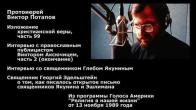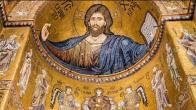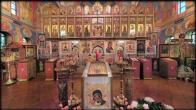You are here
Holy Seven Youths (the "Seven Sleepers") of Ephesus: Maximilian, Jamblicus, Martinian, John, Dionysius, Exacustodian (Constantine) and Antoninus
4/17 August
 These saints lived in the third century. Saint Maximilian was the son of the Ephesian city governor; the remaining six youths were the sons of other notable Ephesian citizens. The youths were friends from childhood, and all were in military service. When the Emperor Decius (249-251) arrived in Ephesus, he commanded all the citizens to appear for the offering of sacrifice to the pagan deities; but torments and the death penalty awaited the recalcitrant. Upon denunciation by those who sought the Emperor's favor, the seven Ephesian youths were also called to account. While standing before the Emperor, the holy youths confessed their faith in Christ. Immediately, their military insignia - their military belts - were taken from them. However, Decius set them free, hoping that they would change their minds while he was on a campaign. The youths left the city and hid in a cave on Mount Ochlon, where they passed the time in prayers, preparing for the martyric struggle. The youngest of them - Saint Jamblicus - clothing himself in pauper's rags, would go to the city and buy bread. During one such excursion to the city, he heard that the Emperor had returned and that they were being sought in order to be put on trial.
These saints lived in the third century. Saint Maximilian was the son of the Ephesian city governor; the remaining six youths were the sons of other notable Ephesian citizens. The youths were friends from childhood, and all were in military service. When the Emperor Decius (249-251) arrived in Ephesus, he commanded all the citizens to appear for the offering of sacrifice to the pagan deities; but torments and the death penalty awaited the recalcitrant. Upon denunciation by those who sought the Emperor's favor, the seven Ephesian youths were also called to account. While standing before the Emperor, the holy youths confessed their faith in Christ. Immediately, their military insignia - their military belts - were taken from them. However, Decius set them free, hoping that they would change their minds while he was on a campaign. The youths left the city and hid in a cave on Mount Ochlon, where they passed the time in prayers, preparing for the martyric struggle. The youngest of them - Saint Jamblicus - clothing himself in pauper's rags, would go to the city and buy bread. During one such excursion to the city, he heard that the Emperor had returned and that they were being sought in order to be put on trial.
Saint Maximilian inspired his friends to leave the cave and appear voluntarily in court. But the Emperor, having learned where the youths were hiding, ordered that the entrance to the cave be blocked up with stones so that the youths would die therein from hunger and thirst. Two of the officials present at the blocking up of the entrance to the cave were secret Christians. Desiring to preserve the memory of the saints, they placed among the stones a sealed coffer in which were two tin plaques. Written thereon were the names of the seven youths and the circumstances of their passion and death.
But the Lord brought upon the youths a miraculous sleep, which lasted nearly two centuries. By that time, the persecutions against the Christians had ceased, although under the holy, right-believing Theodosius the Younger (408-450), heretics appeared, who rejected the resurrection of the dead at the Second Coming of our Lord Jesus Christ. Some of them said: "How can there be a resurrection of the dead, when there will be neither body nor soul, since they will be annihilated?" Others asserted: "Only souls will have a recompense, since it is impossible for bodies to rise and come to life after a thousand years, when even dust from them does not remain. It was then that the Lord revealed the mystery of the awaited resurrection of the dead and the future life through His seven youths.
The owner of the parcel of land on which Mount Ochlon was situated began a stone building, and the workers took the entrance to the cave to pieces. The Lord revived the youths, and they awoke literally from ordinary sleep, not suspecting that nearly two hundred years had passed. Their bodies and clothes were completely incorrupt. Preparing to receive torments, the youths charged Saint Jamblicus once more to buy them bread in the city to fortify their strength. On approaching the city, the youth was astounded to see the holy Cross on the gates. On hearing the Name of Jesus Christ freely pronounced, he began to doubt that he had come to his own city.
When paying for the bread, the holy youth gave to the merchant a coin with the depiction of the Emperor Decius and was detained as one who had hidden a treasure of old coins. Saint Jamblicus was brought to the city governor, whom the Ephesian bishop was with at that time. Listening to the youth's perplexed answers, the bishop understood that God was revealing through him some mystery, and he himself set out for the cave together with the people. At the entrance to the cave, the bishop drew the sealed coffer out from the pile of stones and opened it. He read the names of the seven youths on the tin plaques and the circumstances of their immurement in the cave at the command of the Emperor Decius. On entering the cave and seeing the youths alive therein, everyone re-joiced and understood that the Lord, through their waking up from a long sleep, was reveal-ing to the Church the mystery of the resur-rection of the dead. Soon the Emperor ar-rived in Ephesus and conversed with the youths in the cave. And then the holy youths, before everyone's eyes, laid their heads on the ground and again fell asleep, this time until the general resurrection. The Emperor wanted to place each of the youths in a precious reliquary, but the holy youths, appearing to him in a dream, said that their bodies were to be left in the cave on the ground. In the twelfth century, the Russian pilgrim, Abbot Daniel, saw these holy relics of the seven youths in the cave.
The memory of the seven youths is celebrated a second time on the 22nd of October. (According to one tradition, which entered into the Russian Prologue, the youths fell asleep the second time on this day; according to a note in the Greek Menaion of 1870, they fell asleep the first time on the 4th of August, and awoke on the 22nd of October. The holy youths are also remembered in the service of the ecclesiastical new year - the 1st of September.)
Relics in cathedral - monthly calendar
| S | M | T | W | T | F | S |
|---|---|---|---|---|---|---|
|
|
|
|
1
|
2
|
3
|
4
|
|
5
|
6
|
7
|
8
|
9
|
10
|
11
|
|
12
|
13
|
14
|
15
|
16
|
17
|
18
|
|
19
|
20
|
21
|
22
|
23
|
24
|
25
|
|
26
|
27
|
28
|
29
|
30
|
31
|
|
PARISH LIFE
Address of our Cathedral
While all the materials on this site are copyrighted, you may use them freely as long as you treat them
with respect and provide attribution on the Russian Orthodox Cathedral of St.John the Baptist of Washington DC.









